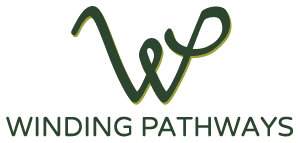by Winding Pathways | Dec 3, 2020 | (Sub)Urban Homesteading, Garden/Yard, Mammals, Nature, Pests
What a year this has been! Coronavirus altered the lives of nearly everyone. Many of us now work from home and spend the day staring at a computer screen and attending zoom meetings.
A delight of working from home is entertainment right outside the window. Sometimes we take our eyes off the screen, glance outside, and grin as we watch chipmunk antics.
No Need To Feed
We don’t really feed our chipmunks. They’re opportunists. When chickadees, nuthatches and other birds drop seeds from hanging feeders the chippies are right there filling their cheeks with sunflower seeds and dashing off to store them in their underground burrows.
Manly people detest these small, beautiful mammals and cite the damage they do to retaining walls and lawns. Our retaining wall is crafted of huge glacial boulders. Its many nooks and crannies are perfect for chipmunks but are so sturdy chipmunks can’t damage it. They give us cheer in a perplexing year.
Many species of chipmunks live in the United States but the one most common in suburban areas between the Atlantic and the Great Plains is the Eastern Chipmunk. Almost everyone can identify this animal that only tips the scale at two to three ounces. Counting its tail, a big one might stretch a foot long.
Where Do Chipmunks Live?
Chipmunks love what biologists call “structure”. A pile of firewood or old lumber, a brush pile, a rarely used shed, or a retention wall is structure that makes a dandy home for chipmunks. They typically create an extensive subterranean home under structures that is an extensive tunnel system with several entrances to the surface.
What’s In a Name?
Chipmunks were named by the Ojibwe Tribe with the words that mean, “one who descends trees headfirst.” Climb they can! Chipmunks scamper up and down trees and bushes and easily reach our bird feeding platform. They prefer sunflower seeds and stuff their cheek pouches until they seem ready to burst. Then they scoot off to store seeds down in their tunnels. We wonder how big that pile of seeds might be! Chippies also eat wild seeds, acorns, and even an occasional insect.
During the coldest weather chippies stay underground and sleep in a kind of torpor. They don’t hibernate and probably enjoy snacking on the sunflower seeds they cashed months before. Last winter one tunneled under the snow and emerged under our bird feeder for fresh seeds.
Overall Delight
We love watching our chipmunks chase one another up, down and around the feeder and retaining wall. Suburban chipmunks are fortunate. Snakes and raptors love snacking on them but people keep long, skinny reptiles out of yards and not many hawks venture near homes. Since chipmunks are day shift animals our barred owls don’t get a crack at them because they work the night shift.
So, in exchange for a safe place to eat, a scoop of seeds daily, and a cozy retaining wall to burrow in, our chipmunks give us a humorous and interesting break from working at home chores. CBS recently aired a short on a food editor who, during Coronavirus time has catered to a chipmunk outside her home. Sweet and tender show!
-
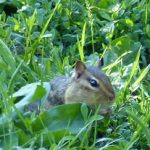
-
Foraging for seeds.
-
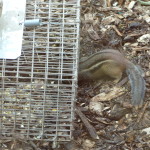
-
Having excavated, the chipmunk now enters the tunnel to get the corn.
-
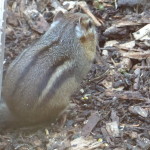
-
The chipmunk figured how to tunnel under the live trap, gather up the corn and emerged with pouches full.
-
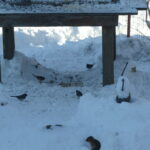
-
Chipmunks forage under the bird feeding platform.
by Winding Pathways | Oct 29, 2020 | Mammals, Nature, Reflections/Profiles
We settle into fall and sometimes like to just browse past stories. Here are some links to more recent Gazette features and natures notes.
Explore Iowa’s National Parks. August 2020
Take Advantage of Iowa’s County Gems July 2020
Why RV Life Isn’t for These Senior Tent Campers. July 2020
Bear Sightings in Iowa Getting More Common. June 2020
Take a Walk on the Wilder Side April 2020
Derecho Stories: Get Outside and Walk But Stay Safe September 2020, Rebirth Amid the Rubble September 2020
-

-
Overlook from Effigy Mounds
-

-
A near, fun place to walk and climb is Waldo’s rock.
-

-
Prairie plant
-
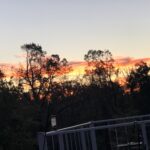
-
Sunrise on a changed landscape
-
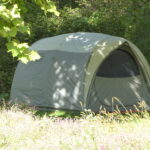
-
We have adjusted to getting older by using a larger tent and cots.
-
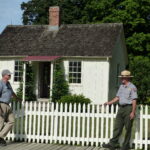
-
Herbert Hoover was Iowa’s only president.
-
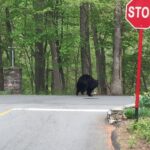
-
Bear sightings are more common in Iowa.
by Winding Pathways | Oct 15, 2020 | Nature, Trees
Winding Pathways is partnering with Cornell College, Indian Creek Nature Center, Peoples Church, Prairiewoods, and Trees Forever to present Treasuring our Trees.
Join us via ZOOM to honor and remember the fallen trees in the Cedar Rapids and surrounding areas following the Derecho of August 10, 2020. Sunday, October 25, 12:00 noon to 1:00 p.m. Learn more at www.prairiewoods.org.
Join using Zoom meeting ID 829 4883 0080 & password 056503.
-

-
ZOOM invitation to honor our trees.
by Winding Pathways | Oct 8, 2020 | (Sub)Urban Homesteading, Birds, Garden/Yard, Nature
The August 10 derecho changed Cedar Rapids, and Winding Pathways wasn’t spared. We lost 47 of our 53 large trees during the 40-minute windstorm. It greatly altered our restoration plans. Here’s what we did or plan to do in response to the loss of trees.

Prairie plant
New prairie plot: We planted this in early May. As expected, we only saw a glimpse of prairie plants in its first growing season, although early prairie plants give us promise that many more will appear next year. We will try to burn it either this fall or early next spring.
The derecho helped the prairie by felling or breaking four Douglas firs, one black oak, and one green ash. Two of these trees cast some morning shade on the prairie. The rest shaded it some in the late afternoon. They’re gone, so the site will enjoy more sunshine, and prairie loves sun. We mourned the tree loss but the prairie will benefit.
The trees didn’t go easily. Several tumbled into the prairie. They were big and filled with branches, leaves, and needles. We prioritized removing them. Many chainsaw and brush hauling hours later we had the trees moved into a big brush pile in the back. The sun now shines on the prairie planting. We’ll keep you posted.
-
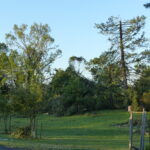
-
The firs and oak smothered the emerging prairie.
-
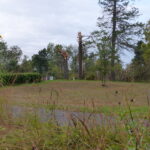
-
The firs shaded the prairie. Now more sun will shine.
Derecho Creates Opportunity
After we cleared fallen trees from the prairie, we turned to many trees that tumbled down on the north and east ends of our land. It’s taken hours to cut shattered trees and cut pathways through fallen logs so we can walk our own land easily. This land was once shady. Now the sun hits the ground. The storm transitioned the land from dense forest to savanna – a landscape of occasional trees and rich plant growth hugging the ground. Wildlife will transition as the habitat changes. Because of this change in the forest, some bird species may decline temporarily and others will thrive.
Open woodland birds: Robins, cardinals, white-eyed vireos, flickers, and Downey, red-bellied, and red-headed woodpeckers.
Mature forest birds: Scarlet tanagers, ovenbirds, wood thrushes, and pileated and hairy woodpeckers.
Shade and Sunshine
We didn’t lose all our forest trees. Just most of them. The loss of shade creates opportunities for ground-hugging plants to thrive, including baby trees. We’re already found some tiny black raspberry plants growing and many oak and hackberry seedlings.
To make sure that appropriate native savanna plants establish in the now sunny areas we ordered a native seed mix from Pheasants Forever that we’ll plant this fall.
We will keep you posted on changes in our prairies and new savanna.
by Winding Pathways | Oct 1, 2020 | (Sub)Urban Homesteading, Birds, Mammals, Nature
We’ll remember August 10, 2020, forever. On that day the wind changed Eastern Iowa and Winding Pathways in a way that will persist for a century. In 40 minutes, straight-line wind gusts up to 140 miles an hour toppled or broke 47 of our 53 trees. Two landed on our roof.
Our property adjoins Faulkes Heritage Woods, a 110-acre preserve of tall old trees, mostly oaks. The derecho felled most of its big trees that tumbled into a jumbled mass of trunks, branches, and leaves.
-

-
The pine toppled onto the cabin roof.
-
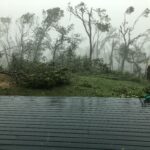
-
Effects of straight-line winds.
-
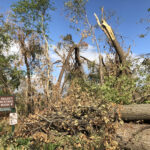
-
Twisted trees.
Wondering how the great change would impact wildlife, we quickly noticed two short term impacts. August and September are usually slow months for bird feeder visitors as birds normally have plenty of wild food. As soon as the wind calmed, all was still. Faithfully, Rich found and filled the feeders. The next morning, we noticed heavy use by house finches, titmice, nuthatches, cardinals, woodpeckers, and chickadees. It was almost like the feeding frenzy that happens as a winter blizzard approaches.
Short Term Impacts
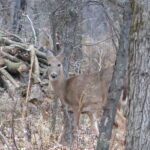
Trails are disrupted.
We quickly realized that deer, raccoons, coyotes, woodchucks, squirrels, and even chipmunks experienced a life-changing event. Their travel corridors changed as huge trees blocked deer trails, for example. They had to find new routes through the debris. One afternoon we saw a mother deer and fawn walking on the one remaining “open” trail around our prairie. Then, they crawled under a fallen tree and disappeared into the maze of branches. The ever clever raccoons have become more than pests as they tear up feeders and raid garbage cans. Also, the storm destroyed this year’s acorn and walnut crop, nuts that many species require. That is why the birds came so readily to the feeders. And still do!
-
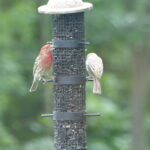
-
The house finches eat serenely.
-
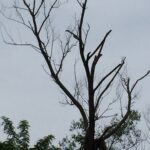
-
Even the crows come around to grab a snack.
-
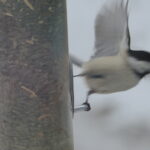
-
From early light to last dusk chickadees work the feeders.
Longer-Term Impacts
We are now watching for the long term impacts of the loss of so many trees. Our good friend, Jim Berry, is the former executive director of the Roger Tory Peterson Institute in New York. We asked him what we might expect following the loss of so many big trees in Faulkes Woods and our property.
“There are winners and losers. I would expect to see fewer wood thrushes, ovenbirds, and scarlet tanagers. They prefer mature forests. The more open woods and sunshine hitting the ground will cause an increase in cardinals, robins, and white-eyed vireos,” he said.
We have been fortunate to enjoy seven woodpecker species over the years. Some will benefit and some will lose from the great woods opening windstorm. According to Jim red-headed, red-bellied, and downy woodpeckers are likely to increase. So will flickers.
But sapsuckers and hairy and pileated woodpeckers that like the old trees and a closed canopy will probably decline.
-

-
The small mammals are hungry.
-
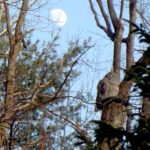
-
Owls will benefit from broken trees as cavities develop.
-
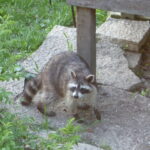
-
Raccoons ravage feeders at night.
The loss of hollow trees that shelter animals and the destroyed nut crop are going to make this a lean winter for squirrels. Deer, blue jays, woodchucks, chipmunks, and wild turkeys will also miss the acorns that normally rain down each fall.
We were saddened to lose so many trees but look forward to watching the forest restore itself. We’re also watching to see changes in wildlife.
by Winding Pathways | Sep 24, 2020 | (Sub)Urban Homesteading, Garden/Yard, Mammals, Nature
People in Eastern Iowa planting young trees to replace those shattered by the August 10 Derecho need to remember an important step. Protect those vulnerable and valuable young trees.
Here is our story. A distressing sight greeted us one September morning a few years ago as we walked to the mailbox to get the newspaper. Overnight a deer had chosen our favorite young maple tree to polish his antlers. He was thorough and had rubbed the bark off all around the two-inch diameter trunk. It was girdled and doomed.
We should have known better. Buck deer start growing their antlers in April and by about Labor Day, they are full size. Antlers are formed by a blood-rich skin called velvet. By late summer it has dried and bucks rub it off polishing up their antlers for dominance battles with rivals. By neglecting to protect our tree we gave a buck a great rubbing place. And doomed our tree to an early death.
Deer begin rubbing in early fall and sometimes continue until the deer mating season approaches in early November. Deer live in most American cities and regularly roam through suburbs. They are as happy to rub their antlers on an ornamental tree in the front yard as on one back in the woods. It’s never good for the tree.
Deer seem to prefer to rub on saplings with trunks a few inches in diameter. They especially seem to prefer pine and black cherry trees but we have even lost young spruces to their rubs. One thing is predictable. The tree that a family most treasures is the one a buck is likely to destroy.
Damage is preventable. We now run a four-foot-high circle of wire mesh around the tree and wire it to a fence post hammered securely into the ground. Once a tree reaches five or six inches in diameter deer rarely bother them, so the wire is only needed for a few years.
Be sure to water your new, young fall-planted tree. And, protect it with wire mesh.
-
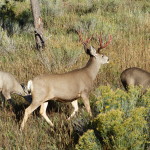
-
With polished antlers, this muledeer buck proudly strode across the meadow. Whitetails are more common in the East and Midwest. “Mulies” are common in the High Plains and west.
-
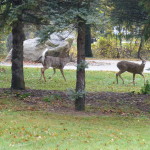
-
On Halloween day a buck was hot on the “tail” of this doe and yearling.
-
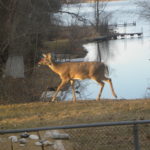
-
Deer in yard.
